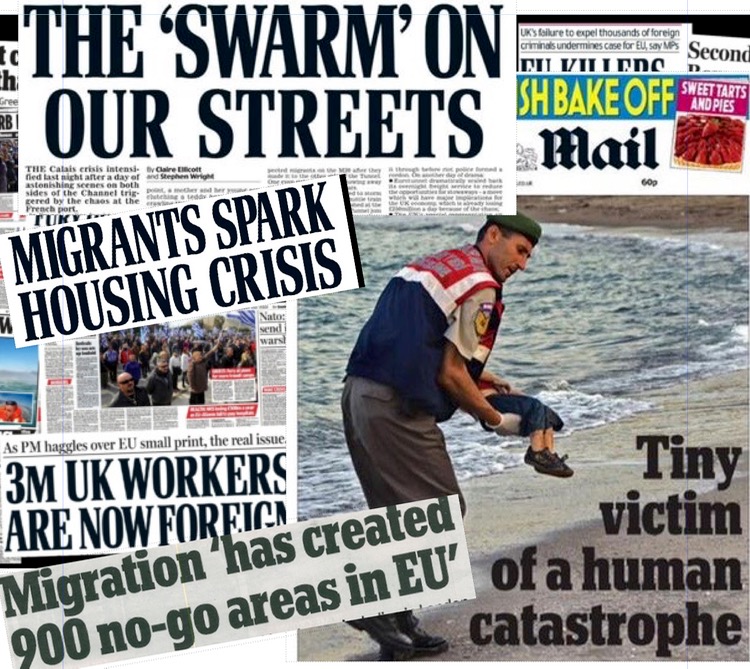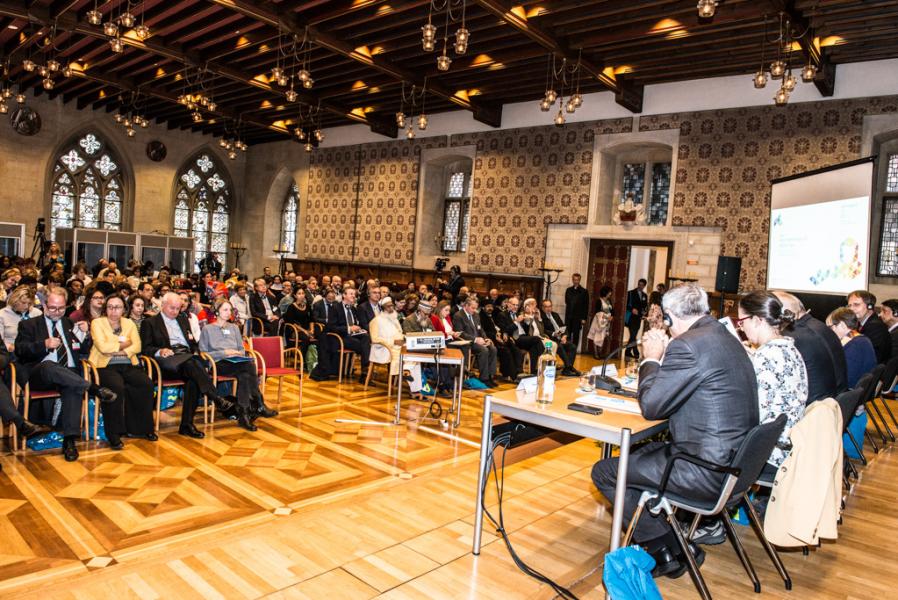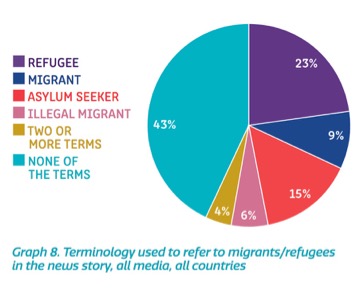IARJ@Work : Un membre du conseil d'administration de l'IARJ conseille sur les défis de la couverture de la migration lors d'une conférence interreligieuse européenne

Migration has become a front-page issue across Europe, particularly after German chancellor Angela Merkel’s announcement in 2015 welcoming refugees fleeing war in Syria, Iraq and Afghanistan. Meanwhile, thousands of people mostly from Sub-Saharan Africa have tried to cross the Mediterranean Sea, often in overloaded and ill-equipped boats. Many have drowned in these attempts—and the tragedy goes on.
Displacement of persons is a global phenomenon. According to the UN Refugee Agency UNHCR, currently more than 65 million people around the world have been forced out of their homes. While the number of arrivals in Europe dropped in 2017 from its peak of more than one million in 2015, the issue of asylum seekers, refugees and migrants remains controversial in European societies. The fact that most of these migrants are Muslim plays a key role in the debate at a time when Europe struggles with its own identity, seemingly torn between its Western Christian heritage and increasing secularization.
In this context, journalists frame the debate on a daily basis. Reporters have a responsibility to challenge uninformed attitudes of intolerance and discrimination against migrants.

In September, I was invited, as the European director on the IARJ board, to participate in the annual international inter-religious meeting of the Community of Sant’Egidio, which was held in the German cities of Münster and Osnabrück under the title, Paths of Peace; Religions and Cultures in Dialogue
. The Community of Sant’Egidio is a Rome-based international group of Catholic laity with strong ties to worldwide religious leaders thanks to these annual inter-religious meetings for peace, started in 1986 by Pope John Paul II. Each year they pick a different city. The group has become a network of communities in more than 70 countries.
My remarks came during a panel presentation called New Responses to Migration. On behalf of the IARJ, I discussed the crucial role journalists can play across Europe in covering migration. We understand that our vocation of covering the news with honesty, fairness and balance can be an important counter to hate speech that comes from uninformed biases against migrants and refugees.
Here are some of the recommendations I shared with the audience
Take time and space to ensure that more migrant and refugee voices are heard. Too much media coverage of immigrant communities shows men, women and children either as victims or as perpetrators. As victims, media stories portray migrants as drowning in tragic accidents, traveling on foot as they carry children and the elderly, suffering from the abuse of human traffickers, or dying in trucks trying to get into Europe. As perpetrators, stories about immigrants include sexual aggression toward women in Cologne in 2015, terrorists who were part of the 2017 attack in Barcelona—and other news stories about crime that tend to highlight anyone who is an immigrant.
As journalists, we must report the news as it unfolds without censorship. But we also should report on the lives of immigrants in a broader sense: as parents, workers, students—their daily lives now and in the past. We can tell stories of success, or about their dreams and aspirations, through their own voices and experiences.
Let our audiences know about successful initiatives. Sometimes journalists face challenges convincing editors in our newsrooms to allow us to cover successful humanitarian initiatives. To editors hearing a brief summary of these possible stories, these projects can tend to look similar to each other. It can be hard to explain why a media outlet should run a story about a certain successful initiative—unless we become more creative in spotting what makes a particular project unique and newsworthy.
Try to identify and understand the triggers and mechanisms of hate speech against migrants and refugees in each nation. We cannot ignore people in European countries, particularly from far-right parties, who will insist only on the equation: migration and religion equals violence. All of us know that some of our readers and viewers may prefer to ignore these extreme voices. They may prefer a nicer, simpler version of reality in their media. But it is our duty as journalists to try to reflect all aspects of an unfolding story. Extremists are a part of that range of voices, so we must probe what is happening on these fringes even in these groups may be disturbing to some of our audience.
Changing the Narrative
Report

Roughly two months after the meeting of the Community of Sant’Egidio, a great contribution to this journalistic debate about migration in Europe was launched.
In November 2017, the European branch of the World Association for Christian Communication (WACC) et le Churches’ Commission for Migrants in Europe (CCME) released their research project on refugees: Changing the Narrative: Media representation of Refugees and Migrants in Europe. (Links to summaries of the report in four languages can be found below.) After research conducted in Greece, Italy, Norway, Serbia, Spain, Sweden and the United Kingdom, the report says in part:
Project participants were positively surprised by the overall neutral tone in approximately half of the stories in the sample, with another one-third deemed ‘sympathetic.’ Impartial journalism, which presents facts and perspectives from different sides, is vital to uphold. ‘Sympathetic’ journalism, however, runs the risk of over-emphasizing the refugee as a victim. Thus, rather than sympathy, journalists should strive for ‘empathy,’ allowing the person to express her or himself and covering the issue from a perspective of understanding, based on facts.
Among their recommendations for professionals and news organizations, I would like to underline the following:
- Respect the five-point guideline on migration reporting: Facts not bias, Know the law, Show humanity, Speak for all, Challenge hate.
- Ensure a better and more consistent use of references to national and international legislation relating to human right and refugee law
- Continue using correct terminology; avoid at all costs the use of terms that have a negative connotation in the local context
- Include more individual refugees and migrants in stories on refugee and migration issues, and use more direct quotes from refugees and migrants.
- Ensure that all communities of refugees and migrants living in Europe are given appropriate space in the news, to combat invisibility and improve social integration.
Vous souhaitez en savoir plus ?
Watch a video of Maria-Paz Lopez’s remarks during her panel (audio includes translation into Italian). You can learn more about the overall panel here.
Read more about Changing the Narrative: Media representation of Refugees and Migrants in Europe. Executive summaries of the WACC-Europe and CCME project are available in English, in Spanish, in German and in Français.
María-Paz López is the religion columnist and foreign correspondent in Berlin of La Vanguardia, a Spanish national daily based in Barcelona. She is an active IARJ board member.
